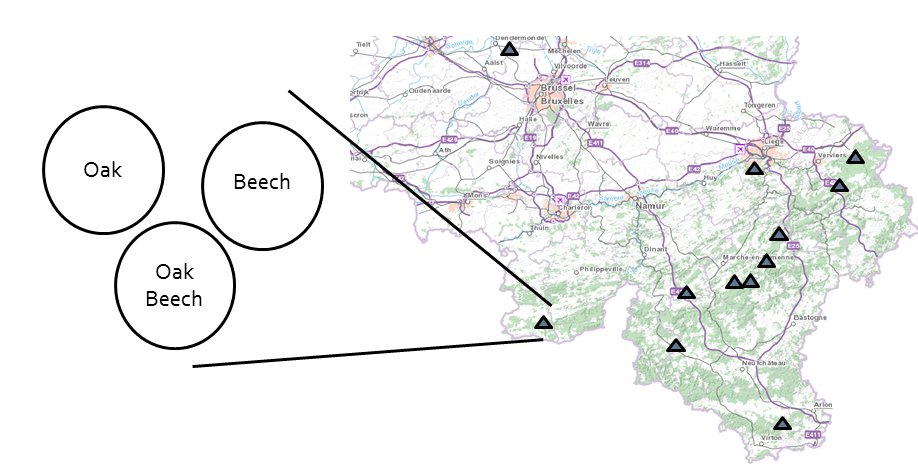triplets
A new platform for forest research focusing on sessile oak (Quercus petraea) and common beech (Fagus sylvatica) is being established. The aim is studying the effects of species mixing on the growth patterns of mature trees over gradients of resource availability.

|
| A triplet in Baileux: a pure stand of sessile oak, a pure beech stand, and a mixed stand of sessile oak and beech (photos: Kristoffel Jacobs) |
design
The platform will comprise twelve triplets, each consisting of a pure stand of sessile oak, a pure stand of beech and a mixed oak-beech stand. The three forest stands of a triplet will have a similar elevation, slope, soil, and climate. Among triplets, we aim for a wide variation in soil richness and water availability. Within a triplet, trees will be comparable in dimensions, age and growing conditions. While the size of the forest stands may differ, the pure stands will contain at least 10 trees surrounded by trees of the same species. The mixed stands will contain at least 10 trees of both composing species in an intimate mixture.

|
| The 12 planned triplets |
research goals
Through dendrochronology, we will assess the climatic requirements and sensitivities of both tree species. We will test whether mixed oak-beech forests suffer less from climatic stresses than pure forests of the constituent species. Additionally, we will investigate how the climate and soil conditions affect the interactions between tree species, and in which conditions complementarity effects are more important than competition. Our results will help in predicting the future response of our forests to a changing climate.
more info
For more info about this exploratory, send an e-mail to the contact persons.